
Forest now covers less than a third of Turkey, but ten thousand years ago the land was mostly wooded. [1] The country is reforesting, which is important for the wildlife of Turkey.

Forest now covers less than a third of Turkey, but ten thousand years ago the land was mostly wooded. [1] The country is reforesting, which is important for the wildlife of Turkey.
The legal definition of forest has minimum area 3 hectares[ clarification needed ]. [2] : 291 However the national greenhouse gas inventory is different as it is in line with the FAO: it has minimum 1 ha and 5m tree height and subcategories of coniferous, deciduous, mixed, and ‘other forested land’ which has crown closure between 1 and 10 percent. [2] : 299, 301 Productive forest is defined as having a crown closure of over 10%. [2] : 292 Trees grown for crops for agriculture in Turkey (such as its hazelnuts) are not classified as forest. [2] : 301
Ten thousand years ago the land was mostly forested, [1] but forest cover before the formation of the Republic in 1923 is not well known. [3] Prehistory can be studied from tree rings and palynology, ancient pollen and charcoal. [4] : 214 From 10000 BC onwards oak increased in Central Anatolia, but after 4000 BC they were almost all cut down, such as for fuel and construction in Çatalhöyük. [4] : 214 Human impact is thought to be negligible until the Bronze Age around 3500 BC, which included wood transport from remote areas. [4] : 215 Much old growth forest was cut down in the last two thousand years, especially in the last five hundred, and sometimes armies burnt it to expose their enemies and sometimes ships were built and some was cleared for agriculture in Turkey. [4] : 214 As well as oak there was juniper and Pinus nigra. [4] : 215 The Ottoman navy used timber from the coasts of the Black, Marmara and Aegean Seas. [4] : 214 But armies used more wood than navies. [4] : 218
From sources such as Theophrastus Ancient Mediterranean civilisations used wood as a fuel in houses, bakeries, bathhouses and for metalwork. Cedar was used for temples such as at Ephesus and Artemis. Chestnut and fir was used for charcoal. [4] : 217
The first big afforestation project was in 1939. [5]
There is old-growth forest (sometimes called ancient woodland) and over 500 taxa of trees and shrubs in the country. [4] : 213 It is defined differently to ancient woodland in the UK as “A primary or natural/near natural forest area containing tree species, whose existence can be traced back from hundreds of years to neolithic ages.” Degraded ancient woodlands are sometimes very scattered. [4] : 219 Both local support and national policy are needed to rehabilitate them. [4] : 213
Forest covers 23 million [6] of Turkey's 78 million hectares (almost 30%), but 3 million hectares have less than 10% crown cover. [2] : 301 Almost all forest is state owned and managed by the General Directorate of Forestry [5] of the Ministry of Agriculture and Forestry. [7] The constitution prohibits forests being transferred from state ownership; however, private afforestation permits allow the private sector to reforest state land. [8] Less than four thousand hectares a year are reforested by the private sector. [9] 5% of forest is coppice and the rest high forest. [10] There are also six million hectares of maquis, mostly in the south and west. [11] High rainfall in the eastern Black Sea Region sustains temperate rainforest. [12] Drought in Turkey is a threat both directly and by encouraging bark beetles. [13]
The Turkish Industry and Business Association predicts a 90% reduction in habitat suitable for Black pine. [14] : 18 Decrease in precipitatİon is especially snow. [14] : 18 They say that the mega forest fires that took place in 2021 and the shrinkage and even drying of wetlands in Central Anatolia are the most obvious examples of aridification. And that the severity of drought and the size of the area it penetrates will increase with the effects of climate change; and that it is predicted that this will negatively affect forest. And that in a climate that becomes more arid, efforts to increase sink areas, such as afforestation and carbon sequestration, will become less efficient. [14] : 17 They suggest: [14] : 18
relevant strategies and action plans should include targets to reduce and adapt to the effects of climate change on forest ecosystems, as well as targets that clearly outline the role of forests in terms of carbon storage.
A holistic afforestation action plan should be developed, taking into account land degradation, and in this action plan, potential areas suitable for afforestation through afforestation in Turkey should be identified, taking into account the current land use situation, socio-economic conditions and ecological balances, and the work to be carried out in these areas should be planned.
Legal regulations that directly lead to a decrease in forest area should be abolished, the issue of allocation of forest areas to non-forestry uses should be reviewed, and the issues of climate change and carbon storage of forests should be included in national forestry legislation, especially the Forest Law and the National Parks Law.
Although carbon pricing and emission reduction are essential in the context of combating the climate crisis and the net zero emission target, projects based on "biotic carbon sequestration" are also increasingly of critical importance. In this context, systems and mechanisms that will increase the contribution of private sector organizations and encourage investments for carbon sequestration should be established. For example, improving existing afforestation incentive practices, so that the carbon captured by LULUCF practices can be used for offsetting purposes. Studies such as establishing an integrated system with ETS or establishing a National Afforestation Certification System can be carried out. These certification and trading systems and mechanisms for the LULUCF sector must observe environmental honesty, transparency and contribution criteria; Establishment in compliance with global standards and international validity; It is important to make the necessary arrangements to integrate it into international certification systems.
They say that not much land is suitable for afforestation.
In 2022 6 million stere of firewood and 34 million m3 brushwood (dikili damga means timber mark?) were cut. [15] : 26 As of 2023 [update] wood production provides the main income from forests. [16] 25 million cubic metres of wood was harvested in 2022, including 9 million m3 of timber, 9 million m3 of fibre-chip wood, 5 of paper wood and 1 of industry wood. [16] : 13 500 million lira (32,000,000 USD) support was provided to ten thousand families in 2022. [6] : 7.8 ferdi desteklerin il düzeyinde dağılımı_2022 Coppices have become high forests, [2] : 305 and grassland in and around forest has become forest. [2] : 308

8 ecoregions are officially defined [2] : 291 (a bit less than the WWF list of ecoregions in Turkey) all of which can contain woodland: Euxine-Colchic deciduous forest; North Anatolian deciduous, coniferous and mixed forest; Mediterranean coastal zone deciduous and coniferous forest; Mediterranean Mountain zone; Aegean Inland deciduous and coniferous forest; Central Anatolian steppe; East Anatolian deciduous forest zone; and East Anatolian steppe. [18] Almost all forest is in a temperate climate. [2] : 305
A quarter of the Black Sea Region is forested, and other regions with over 10% forest are Marmara, Aegean, Mediterranean and East Anatolian. [19] Wildfires in Turkey are increasing in some regions due to climate change in Turkey. [20] Because of droughts in Turkey in 2008, 2020 and 2021 more forest burned in those years. [21]
Large area inventories can be done by satellite to hectare scale [2] : 288 and small areas by lidar. [22] The EVANIS database uses the national legal definition of forest and is very accurate for stands but not as good for greenhouse gas due to land use, land-use change, and forestry. [2] : 293



Most forests are natural and semi-natural, on mountains and have a lot of biodiversity, hosting most species of the flora of Turkey and fauna of Turkey, [3] including Anatolian leopards. [23] [24] Deciduous forests are along the Black Sea region. Species in various ecoregions in Turkey, namely Irano-Turanion, Mediterranean and Euro-Siberian, belong to about 800 woody taxa. The predominant species are Turkish pine (Pinus brutia), Black pine (Pinus nigra), European red pine (Pinus silvestris), Fir ( Abies spp.), Caucasian Spruce (Picea orientalis), Cedar of Lebanon (Cedrus libani 2%) Juniper (Juniperus spp. 3%), Stone pine (Pinus pinea), Mediterranean cypress (Cupressus sempervirens), Aleppo pine (Pinus halepensis), Oriental beech (Fagus orientalis 9%), Oak (Quercus spp. 24%), Alder (Alnus spp.), S weet Chestnut (Castanea sativa), Hornbeam (Carpinus betulus). [3] [25]
8 million hectares of forests are certified by the Forest Stewardship Council. [16] : 4 The value of both exports and imports of wood products increased from 2020 to 2022 but the value of exports exports is more than twice imports. [16] : 3
Forests are the country's main carbon sink, in western Turkey mostly as living biomass rather than soil organic carbon. [26] Forests are estimated to have absorbed 34 million tonnes of the 600 million tonnes of greenhouse gas emissions by Turkey in 2021, less than previous years because of both forest fires and a lot of wood being harvested. [2] : 287 As of 2016 [update] the government did not have enough expertise to easily issue reforestation carbon certificates for the Clean Development Mechanism. [27]
The World Bank says, "Increasing forest cover and improving forest health can help prevent soil erosion and landslides and reduce the impacts of floods." [28] In the mid-2020s the bank is supporting a project to make the forests more resilient against climate change in Turkey. [29]
Some forests, such as Belgrad Forest in Istanbul, are important for recreation and tourism in Turkey. There is an ecotourism plan to 2025. [30] There are forest schools [31] and preschooling. [32]
| | This section needs expansion. You can help by adding to it. (January 2024) |

Some non-native insects are pests. [33] Big fires, such as in 2021, affect the economy, for example tourism. [34] The 2021 mega fires are estimated to have emitted 10 million tonnes of CO2 from 135 million hectares burnt. [2] : 366 Satellites such as Landsat and Sentinel can be used to study fire damage. [35] As of 2018 Istanbul northern forest is suffering from urban growth. [36]
Regeneration of ancient woodland (also called old-growth forest) may be possible, if local needs are properly considered. [4] : 236 As some reforestation attempts have suffered due to lack of water desalination has been suggested. [37]
As of 2022 how much of the Central Anatolian steppe was originally forested was not certain: but in some lower parts it is thought that it has always been steppe and too dry for trees due to rainshadows of the mountains. [38] For steppe it has been suggested that overgrazing should be stopped but that full recovery to woodland should be prevented so as to have both steppe and woodland wildlife. [39]
Some forest is certified by the Forest Stewardship Council. [40] It takes twenty years to convert to forest. [2] : 311

Anatolia, also known as Asia Minor, is a large peninsula or a region in Turkey, constituting most of its contemporary territory. Geographically, the Anatolian region is bounded by the Mediterranean Sea to the south, the Aegean Sea to the west, the Turkish Straits to the north-west, and the Black Sea to the north. The eastern and southeastern boundary is either the southeastern and eastern borders of Turkey, or an imprecise line from the Gulf of Iskenderun to the Black Sea. Topographically, the Sea of Marmara connects the Black Sea with the Aegean Sea through the Bosporus strait and the Dardanelles strait, and separates Anatolia from Thrace in the Balkan peninsula of Southeastern Europe.

A forest is an ecosystem characterized by a dense community of trees. Hundreds of definitions of forest are used throughout the world, incorporating factors such as tree density, tree height, land use, legal standing, and ecological function. The United Nations' Food and Agriculture Organization (FAO) defines a forest as, "Land spanning more than 0.5 hectares with trees higher than 5 meters and a canopy cover of more than 10 percent, or trees able to reach these thresholds in situ. It does not include land that is predominantly under agricultural or urban use." Using this definition, Global Forest Resources Assessment 2020 found that forests covered 4.06 billion hectares, or approximately 31 percent of the world's land area in 2020.

Reforestation is the natural or intentional restocking of existing forests and woodlands (forestation) that have been depleted, usually through deforestation but also after clearcutting. Two important purposes of reforestation programs are for harvesting of wood or for climate change mitigation purposes.

Afforestation is the establishment of a forest or stand of trees (forestation) in an area where there was no recent tree cover. In comparison, reforestation means re-establishing forest that have either been cut down or lost due to natural causes, such as fire, storm, etc. There are three types of afforestation: Natural regeneration, agroforestry and commercial plantations. The intended benefits of afforestation are numerous. In the context of climate change, afforestation can be helpful for climate change mitigation through the route of carbon sequestration. Afforestation can also improve the local climate through increased rainfall and by being a barrier against high winds. The additional trees can also prevent or reduce topsoil erosion, floods and landslides. Finally, additional trees can be a habitat for wildlife, and provide employment and wood products.

In biogeography, the Mediterranean Basin, also known as the Mediterranean Region or sometimes Mediterranea, is the region of lands around the Mediterranean Sea that have mostly a Mediterranean climate, with mild to cool, rainy winters and warm to hot, dry summers, which supports characteristic Mediterranean forests, woodlands, and scrub vegetation. It was a very important part of Mediterranean civilizations.

The Northern Anatolian conifer and deciduous forests is a temperate coniferous forests ecoregion located in northern Anatolia, Turkey.

The Eastern Mediterranean conifer-sclerophyllous-forests, also known as the Eastern Mediterranean conifer-forests, is an ecoregion in the eastern Mediterranean Basin. It covers portions of Turkey, Syria, Iraq, Lebanon, Israel, Palestinian territories, Jordan, and Saudi Arabia.
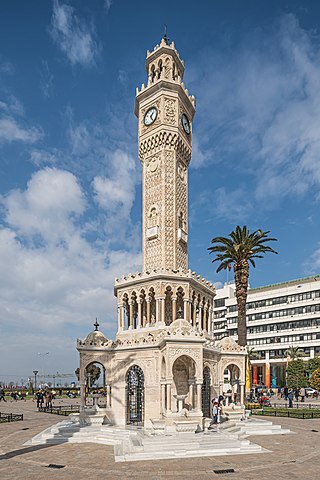
The Aegean Region is one of the 7 geographical regions of Turkey. The largest city in the region is İzmir. Other big cities are Manisa, Aydın, Denizli, Muğla, Afyonkarahisar and Kütahya.

The Central Anatolia Region is a geographical region of Turkey. The largest city in the region is Ankara. Other big cities are Konya, Kayseri, Eskişehir, Sivas, and Aksaray.
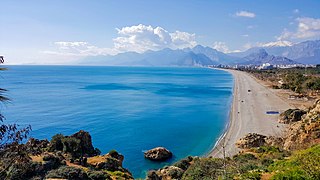
The Mediterranean Region is a geographical region of Turkey. The largest city in the region is Antalya. Other big cities are Adana, Mersin, Isparta, Antakya and Kahramanmaraş.
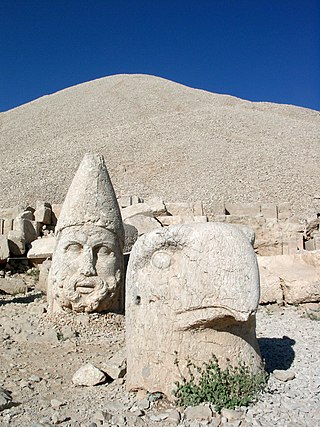
The Southeastern Anatolia Region is a geographical region of Turkey. The most populous city in the region is Gaziantep. Other big cities are Şanlıurfa, Diyarbakır, Mardin and Adıyaman.
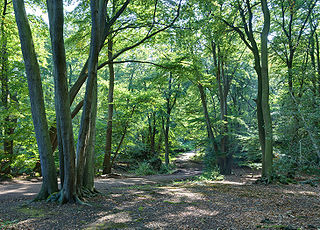
The United Kingdom, being in the British Isles, is ideal for tree growth, thanks to its mild winters, plentiful rainfall, fertile soil and hill-sheltered topography. In the absence of people, much of Great Britain would be covered with mature oaks, except for Scotland. Although conditions for forestry are good, trees face threats from fungi, parasites and pests. Nowadays, about 13% of Britain's land surface is wooded. European countries average 39%, but this varies widely from 1% (Malta) to 66% (Finland). As of 2021, government plans call for 30,000 hectares to be reforested each year. Efforts to reach these targets have attracted criticism for planting non-native trees, or trees that are out of place for their surroundings, leading to ecological changes.

As of 2000 about 9300 species of vascular plant were known to grow in Turkey. By comparison, Europe as a whole contains only about 24% more species, despite having thirteen times the area.
The wildlife of Turkey is abundant and diverse. Turkey is a large country with many geographic and climatic regions and a great diversity of plants and animals, each suited to its own particular habitat. About 1,500 species of vertebrates and 19,000 species of invertebrates have been recorded in the country. Some of the world's staple crops were first cultivated in this area and many of their wild relatives are still found here. The country acts as a crossroads for many birds during migration, connecting Europe, Asia, and the Near East.

Forest conservation is the practice of planning and maintaining forested areas for the benefit and sustainability of future generations. Forest conservation involves the upkeep of the natural resources within a forest that are beneficial for both humans and the ecosystem. Forests provide wildlife with a suitable habitat for living which allows the ecosystem to be biodiverse and benefit other natural processes. Forests also filter groundwater and prevent runoff keeping water safe for human consumption. There are many types of forests to consider and various techniques to preserve them. Of the types of forests in the United States, they each face specific threats. But, there are various techniques to implement that will protect and preserve them.

The Central Anatolian deciduous forests, also known as the Central Anatolian woodlands and steppe, is a Palearctic ecoregion of the Temperate broadleaf and mixed forest biome. It is located in Central Anatolia, Asian Turkey.

The Eastern Anatolian deciduous forests ecoregion is located in the mountains of eastern Turkey. It is a Palearctic ecoregion in the temperate broadleaf and mixed forests biome.
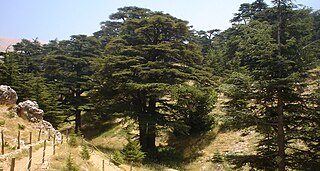
The Southern Anatolian montane conifer and deciduous forests ecoregion, in the Mediterranean forests, woodlands, and scrub biome, is in the eastern Mediterranean Basin.

The Anatolian conifer and deciduous mixed forests is an ecoregion located in southwestern Anatolia, Turkey. It has a Mediterranean climate, and is part of the Mediterranean forests, woodlands, and scrub biome.

Compensatory Afforestation (CA) is defined as the process of afforestation, and associated regeneration activities are done to compensate for destroyed forest land that has been diverted to non-forest activities. In this context, non-forest activities mean the clearing of a forest or just a small part for the following purposes: Coffee cultivation, rubber, tea, plants with oil, medicinal plants or gardening crops. This may be for the purpose of personal use or for business use—or any other purpose other than the reforestation of the forest.
{{cite book}}: CS1 maint: DOI inactive as of January 2024 (link)Juniper-almond woodlands